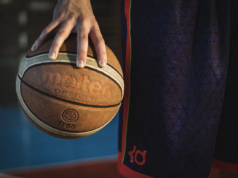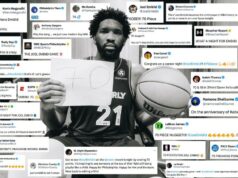
After the San Antonio Spurs produced one of their weaker defensive efforts Tuesday night against the Milwaukee Bucks, the number one defensive rating no longer belonged to them, but rather was contested for in a tie between the Utah Jazz and the Memphis Grizzlies at a 101.4 Points Per 100 Possessions.
The Spurs only fell to the third spot, with a rating of 101.5 Pp/100 and could be in that top spot again by the end of this week depending on the way the remaining games play out for the three teams. Regardless of exact position, it’s clear that the Spurs have established themselves yet again as one of the top-tier defensive teams in the NBA. The Spurs were ranked near average a little over a month ago, but this improvement provides a good opportunity to look at the aspects of the Spurs’ defense again and evaluate what is going well and what could use some fine tuning.
The Spurs are one of the best teams at defending isolation plays. They are giving up only 0.74 points-per-possession (or PPP) and forcing turnovers 15.4% of the time when opponents try to run an isolation play. Both of these numbers rank second in the league against this play-type (behind the Los Angeles Clippers and Dallas Mavericks, respectively). Kawhi Leonard and Danny Green are both elite perimeter defenders and both certainly are two of the biggest reasons why the Spurs defend isolations so well. Leonard in particular is adept at turning opponent’s isolation plays into steals.
Another credit to the Spurs’ strength at defense from their wings is their ability to defend off-screens. The Spurs are only allowing 0.90 PPP when opponents take shots directly after clearing a screen set by a teammate. Many of those shots will occur in mid-range or from three point range and require the ability to fight over screens, with the knowledge of whether to actually fight over the screen or go under the screen based on the player who has the ball, and the commitment to making good rotations.
The Spurs are also very adept at defending plays that the NBA stats page defines as “cuts”. They are giving up 1.11 PPP on these plays, a number that may seem high, but is best in the league. The Spurs success at defending these plays shows their attention to detail on defense. Many times, teams will score on cuts when a defender loses track of the player he is defending or when a switch isn’t properly made after a screen. The Spurs’ defense, while having weaknesses in a few areas, is in the very least, not one susceptible to frequent lapses in focus.
The Spurs are still struggling, however, against the pick and roll. When the ball-handler who initiated the pick and roll finishes the possession, the Spurs are allowing 0.85 PPP, ranked 23rd in the league. While initially the PPP numbers for these play-types look better than, say, when the Spurs are defending cuts, the two main issues are that the league is on-average defending these plays better than the Spurs and opponents are running these plays frequently against the Spurs (18.7% of plays). The Spurs also do not rank well against pick and rolls when the roll man finishes the possession, giving up 1.06 PPP, well below the average number. Opponents are running these types of plays 6.6% of the time against the Spurs, meaning that Spurs are defending a pick and roll of some type on 25.3% of possessions. For perspective, a little more than one in ever four trips down the floor, opponents are running plays that the Spurs are below average at defending. While this does not present a huge issue in the regular season, this is something that teams take note of when preparing for opponents in the playoffs. The Houston Rockets in particular are fairly proficient at scoring through pick and rolls and are appearing now to be a likely playoff opponent for the Spurs.
The Spurs still have over half the season to figure out ways to mitigate these issues. One of the reasons that pick and rolls are so effective against the Spurs is that it allows teams to attack the Spurs’ weaker defenders without involving their stronger ones. Tony Parker is slower than he was several seasons ago and has issues staying in front of quick opposing guards. Pau Gasol is allowing the third highest field goal percentage from mid-range on the team at 44.7%, behind only Parker and Kyle Anderson. Gasol is also allowing a team-high 38.8% on threes taken at the top of the key, a shot opponents are taking against him 9 times a game. It is entirely possible that the Spurs are able to retain the benefits of playing Gasol and Parker on the offensive end without completely compromising their defense, however. In important games against teams that rely heavily on the pick and roll, watch for Green defending the ball handler in the pick and roll more and more often, even on possessions where the other team doesn’t run pick and rolls. The Spurs can also try playing Leonard at the 4 against small ball lineups and even at the 5 against specific lineups, as proved effective when Leonard defended Draymond Green last year, allowing Leonard to switch onto Curry easily during the usually devastating Curry-Green pick and rolls that the Warriors are quite fond of.
While the Spurs have room for improvement, their defensive growth over the past month has been incredibly promising. The Spurs are probably aware of these areas of weakness as well and will likely spend the remainder of the season searching for solutions.
All stats obtained from nba.com/stats.





